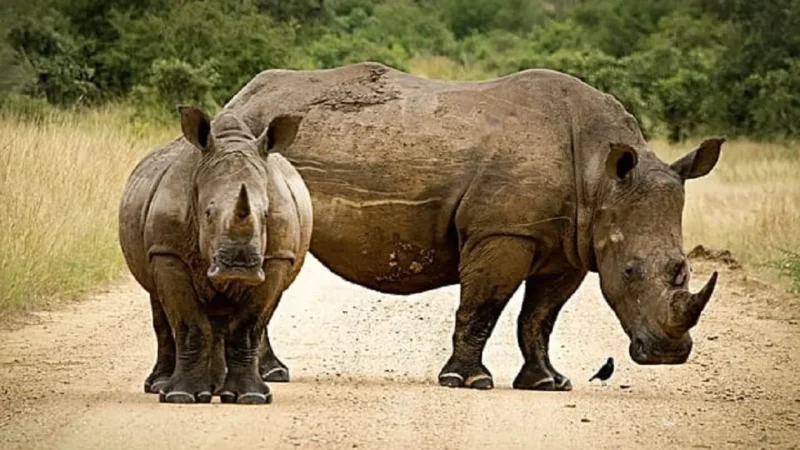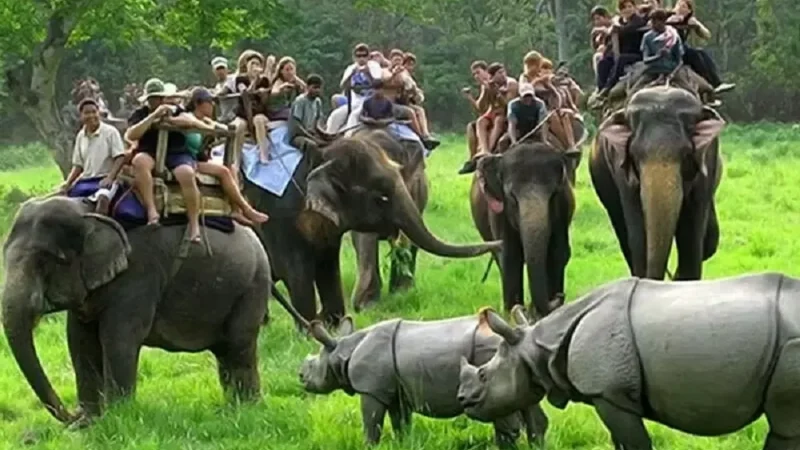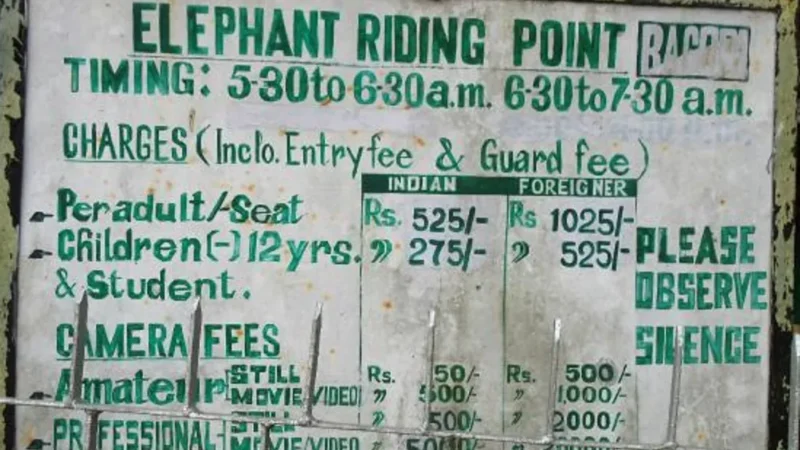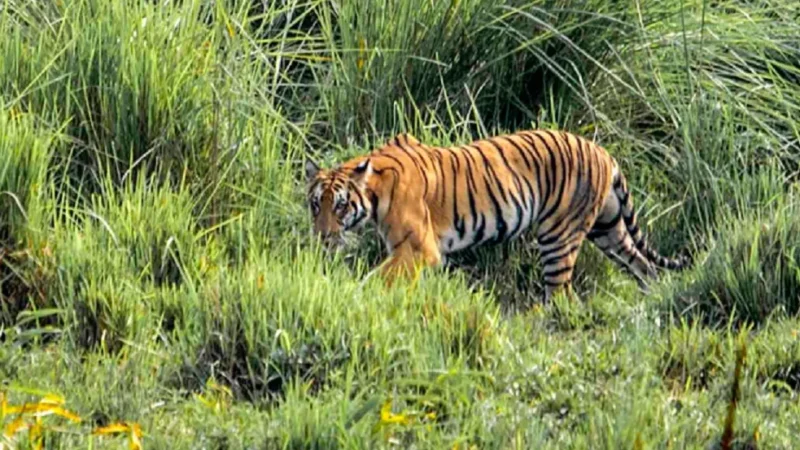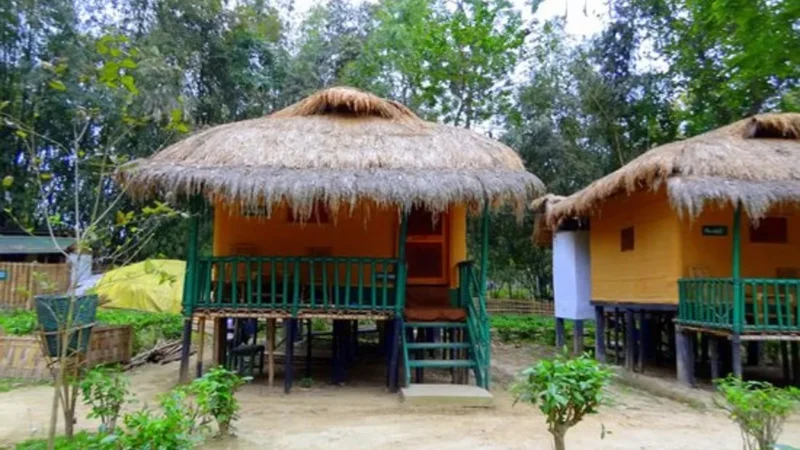14 Best Wildlife Sanctuary in Assam
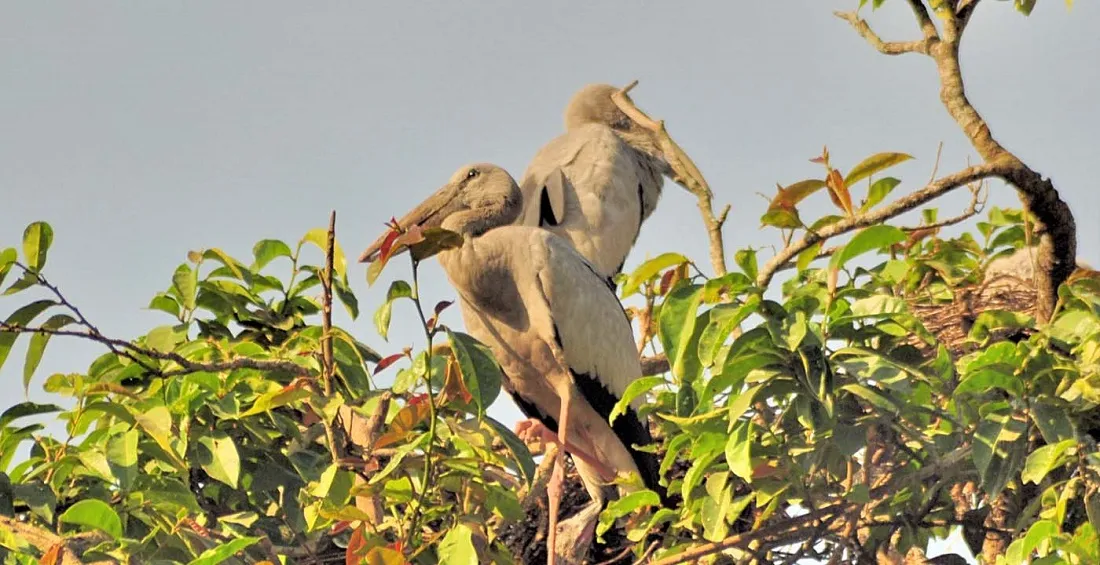
Table of Contents
ToggleAssam Wildlife Sanctuary -
Welcome to the enchanting world of Assam, a state in northeastern India blessed with breathtaking landscapes and rich biodiversity. Assam is home to numerous wildlife sanctuaries that provide sanctuary to a wide range of flora and fauna, making it a paradise for nature lovers and wildlife enthusiasts. From the mighty Indian rhinoceros to elusive big cats and various avian species, Assam’s wildlife sanctuaries offer incredible opportunities to witness and appreciate the wonders of the natural world. Join us on a virtual journey as we explore the diverse wildlife sanctuaries in Assam and delve into their unique offerings.
In this blog, we will take you on an adventure through some of Assam’s most famous wildlife sanctuaries, uncovering their fascinating features, the wildlife they harbor, and the conservation efforts dedicated to their protection. From the iconic Kaziranga National Park, renowned for its population of the one-horned rhinoceros, to the lesser-known gems like the Hollongapar Wildlife Sanctuary, which safeguards the endangered Hoolock gibbons, Assam’s wildlife sanctuaries are a testament to the state’s commitment to preserving its natural heritage.
Wildlife Sanctuary in Assam-
1- Garampani Wildlife Santuary
Garampani Wildlife Sanctuary is located in the Karbi Anglong district of Assam, nestled in the picturesque landscapes of the North Cachar Hills. Established in 1952, it covers an area of approximately 6.05 square kilometers. The sanctuary is known for its diverse flora, fauna, and natural hot springs, making it a unique and fascinating destination for nature lovers.
Flora: Garampani Wildlife Sanctuary is characterized by a mix of tropical evergreen and moist deciduous forests. The sanctuary has various plant species, including tall trees, shrubs, and lush undergrowth. You can find a range of tree species, such as Hollock, Nahar, Uriam, and various bamboo species.
Fauna: The sanctuary is home to a wide array of wildlife species. Some notable animals found in Garampani Wildlife Sanctuary include tigers, leopards, elephants, sambar deer, barking deer, wild boars, and several species of primates like the Assamese macaque and capped langur. Bird enthusiasts will also enjoy the sanctuary as it hosts numerous bird species, including the rare white-winged wood duck, hornbills, and various migratory birds.
Hot Springs: One of the unique attractions of Garampani Wildlife Sanctuary is its hot springs. The sanctuary is renowned for its hot water sulfur springs, believed to have medicinal properties. The hot springs create natural pools where visitors can enjoy a rejuvenating bath while surrounded by the tranquility of nature.
Conservation Efforts: Garampani Wildlife Sanctuary is dedicated to conserving and protecting its rich biodiversity. Efforts are made to preserve the habitat and ensure the well-being of the resident and migratory species within the sanctuary. Conservation initiatives focus on maintaining the delicate balance between human activities and wildlife conservation.
How to Reach Garampani Wildlife Sanctuary:
Garampani Wildlife Sanctuary is located in the Karbi Anglong district of Assam, India. Here are some general directions on how to reach the sanctuary:
- By Air: The nearest airport to Garampani Wildlife Sanctuary is Dimapur Airport in Nagaland, approximately 60 kilometers away. You can hire a taxi or bus from Dimapur to reach the sanctuary.
- By Train: The nearest railway station to Garampani Wildlife Sanctuary is Dimapur Railway Station, which is well-connected to major cities in India. You can hire a taxi or bus from Dimapur to reach the sanctuary.
- By Road: Garampani Wildlife Sanctuary is easily accessible by road. It is located on National Highway 36, approximately 30 kilometers from Golaghat. You can reach Golaghat by bus or taxi from nearby cities like Guwahati or Jorhat, and then proceed to the sanctuary.
Accommodation Options near Garampani Wildlife Sanctuary:
While Garampani Wildlife Sanctuary may have limited accommodation facilities, options are available nearby. Golaghat, the nearest town, offers a range of accommodation options suitable for different budgets. Here are some popular choices:
- Hotels and Resorts: Golaghat has several hotels and resorts that offer comfortable stay options for visitors. Some well-known establishments include Hotel GK Palace, Wild Grass Resort, and Kaziranga Golf Resort.
- Guesthouses and Homestays: For a more immersive experience, you can opt for guesthouses or homestays in Golaghat. These accommodations allow interaction with the locals and experience the local culture. Examples include Rangajun Guest House and Karbi Anglong Guest House.
2. Laokhowa Wildlife Sanctuary
Laokhowa Wildlife Sanctuary, located in Nagaon district of Assam, India, is a notable wildlife sanctuary known for its rich biodiversity and picturesque landscapes. Here is some information about Laokhowa Wildlife Sanctuary:
Location: Laokhowa Wildlife Sanctuary is situated along the southern bank of the Brahmaputra River in Nagaon district, Assam. It covers an area of approximately 70 square kilometers, encompassing a mix of grasslands, wetlands, and forests.
Flora: The sanctuary is characterized by a diverse range of flora, including tall grasses, reeds, aquatic plants, and various tree species. The vegetation provides a suitable habitat for different wildlife species and supports the region’s ecological balance.
Fauna: Laokhowa Wildlife Sanctuary is home to a variety of wildlife species, including the great Indian one-horned rhinoceros, wild elephants, tigers, leopards, deer species like hog deer and barking deer, wild boars, and various primate species. Additionally, the sanctuary is a haven for avian enthusiasts, with over 225 bird species recorded, including the Bengal florican, greater adjutant, and various waterfowl species.
Riverine Ecosystem: The sanctuary is situated along the Brahmaputra River, and its riverine ecosystem adds to its ecological significance. The Brahmaputra River and its associated wetlands provide a habitat for numerous aquatic species, including the endangered Ganges river dolphin. Visitors to the sanctuary may be fortunate enough to spot these majestic creatures.
Visiting Laokhowa Wildlife Sanctuary: The sanctuary offers nature enthusiasts and wildlife lovers opportunities to explore its natural beauty. Visitors can engage in activities like wildlife safari, birdwatching, and nature walks within the sanctuary. Before planning a visit, it is advisable to check with the forest department or local authorities for permits, entry fees, and any specific guidelines.
Accommodation Options: While the sanctuary may have limited accommodation facilities, options are available nearby in Nagaon town. Nagaon offers a range of hotels, guesthouses, and lodges that cater to different budgets and preferences. Some popular accommodation choices in Nagaon include Hotel Mayur, Hotel Jonaki Kareng, and Hotel Brahmaputra Ashok.
How to Reach Laokhowa Wildlife Sanctuary-
To reach Laokhowa Wildlife Sanctuary in Assam, you can follow these general directions:
By Air: The nearest airport to Laokhowa Wildlife Sanctuary is Lokpriya Gopinath Bordoloi International Airport in Guwahati, approximately 150 kilometers away. You can hire a taxi or take a bus from the airport to reach the sanctuary.
By Train: The nearest railway station to Laokhowa Wildlife Sanctuary is Nagaon Railway Station, which is well-connected to major cities in India. You can hire a taxi from the railway station or take a local bus to reach the sanctuary.
By Road: Laokhowa Wildlife Sanctuary is easily accessible by road. It is located about 20 kilometers from Nagaon town. You can reach Nagaon by bus or taxi from Guwahati, which is well-connected to other major cities in India.
3. Bornadi Wildlife Sanctuary
Bornadi Wildlife Sanctuary is located in the Udalguri district of Assam, India. Here is some information about Bornadi Wildlife Sanctuary:
Location: Bornadi Wildlife Sanctuary is situated in the northwestern part of Assam, near the foothills of the Himalayas. It covers an area of approximately 26.22 square kilometers, encompassing dense forests, grasslands, and riverine ecosystems.
Flora: The sanctuary is characterized by a diverse range of flora, including semi-evergreen forests, deciduous forests, and grasslands. The vegetation includes a variety of tree species, shrubs, and grasses, providing suitable habitat for wildlife.
Fauna: Bornadi Wildlife Sanctuary is home to many wildlife species. Some notable animals in the sanctuary include elephants, tigers, leopards, clouded leopards, Himalayan black bears, Indian bison, sambar deer, barking deer, and various primate species. The sanctuary is also known for its avian population, with over 200 bird species recorded, including the great Indian hornbill, grey peacock-pheasant, and several species of eagles and vultures.
Riverine Ecosystem: The sanctuary is intersected by the Bornadi River, which flows through its terrain. The river and its associated wetlands provide a habitat for several aquatic species, including fish, turtles, and various water birds.
Visiting Bornadi Wildlife Sanctuary: The sanctuary offers nature enthusiasts and wildlife lovers opportunities to explore its natural beauty. Visitors can engage in activities like wildlife spotting, birdwatching, nature walks, and trekking within the sanctuary. Before planning a visit, it is advisable to check with the forest department or local authorities for permits, entry fees, and any specific guidelines.
Accommodation Options: While the sanctuary may not have extensive accommodation facilities, options are available nearby in Udalguri town. Udalguri offers a range of hotels, guesthouses, and lodges that cater to different budgets and preferences.
How to Reach Bornadi Wildlife Sanctuary-
To reach Bornadi Wildlife Sanctuary in Assam, you can follow these general directions:
By Air: The nearest airport to Bornadi Wildlife Sanctuary is Lokpriya Gopinath Bordoloi International Airport in Guwahati, approximately 180 kilometers away. You can hire a taxi or take a bus from the airport to reach the sanctuary.
By Train: The nearest railway station to Bornadi Wildlife Sanctuary is Udalguri Railway Station, which is well-connected to major cities in Assam. You can hire a taxi from the railway station or take a local bus to reach the sanctuary.
By Road: Bornadi Wildlife Sanctuary is well-connected by road. It is located approximately 10 kilometers from Udalguri town. You can reach Udalguri by bus or taxi from Guwahati, which is well-connected to other major cities in Assam.
Once you reach Udalguri, you can hire a taxi or take a local bus to reach Bornadi Wildlife Sanctuary. The sanctuary is located near Udalguri, and the road leading to it provides convenient access.
Best Time to Visit Bornadi Wildlife Sanctuary -
The best time to visit Bornadi Wildlife Sanctuary in Assam is during the winter and spring, typically from November to April. During this time, the weather is pleasant and comfortable for wildlife exploration and outdoor activities. Here’s a breakdown of the seasons:
Winter (November to February): Winter in Assam is mild, with temperatures ranging from 10°C to 20°C (50°F to 68°F). The weather is dry, and the vegetation is not as dense, making it easier to spot wildlife. It is an ideal time for birdwatching, as migratory birds visit the sanctuary during this season.
Spring (March to April): Spring transitions from winter to summer. The weather becomes warmer, with temperatures ranging from 20°C to 30°C (68°F to 86°F). The sanctuary is lush and vibrant during this time, with blooming flowers and foliage. It is a good time for wildlife sightings and photography.
During the monsoon season (May to October), Assam experiences heavy rainfall, which may make the sanctuary inaccessible due to waterlogging and muddy trails. It is not recommended to visit during this time as it can hinder wildlife viewing and outdoor activities.
4. Chakrasila Wildlife Sanctuary
Chakrasila Wildlife Sanctuary, located in Kokrajhar district of Assam, is a captivating destination for nature lovers and wildlife enthusiasts. Here is some comprehensive information about Chakrasila Wildlife Sanctuary, including how to reach it, the best time to visit, and highlights of the sanctuary:
Chakrasila Wildlife Sanctuary Location: Chakrasila Wildlife Sanctuary is nestled in Assam’s picturesque Bodoland Territorial Area Districts (BTAD), offering a serene and tranquil environment. It spans approximately 45 square kilometers, featuring diverse landscapes encompassing lush forests, rolling hills, and pristine wetlands.
How to Reach Chakrasila Wildlife Sanctuary -
- By Air: The nearest airport to Chakrasila Wildlife Sanctuary is Lokpriya Gopinath Bordoloi International Airport in Guwahati, which is well-connected to major cities in India. You can hire a taxi from the airport or take a bus to reach Kokrajhar town, the gateway to the sanctuary. Chakrasila Wildlife Sanctuary is located about 15 kilometers from Kokrajhar town.
- By Train: The nearest railway station to Chakrasila Wildlife Sanctuary is Kokrajhar Railway Station, which is well-connected to major cities in Assam and neighboring states. You can hire a taxi from the railway station or take a local bus to reach the sanctuary.
- By Road: Chakrasila Wildlife Sanctuary is easily accessible by road. It is well-connected to nearby towns and cities through well-maintained roads. You can hire a taxi or take a bus from Guwahati or other major towns to reach Kokrajhar and proceed to the sanctuary.
Best Time to Visit Chakrasila Wildlife Sanctuary : The ideal time to visit Chakrasila Wildlife Sanctuary is during the winter and spring seasons, from November to April. The weather during this time is pleasant and comfortable, with temperatures ranging from 10°C to 25°C (50°F to 77°F). The sanctuary has lush greenery, blooming flowers, and a vibrant bird population. Wildlife sightings are also more common during this period, as animals tend to come out in search of water and food. It is recommended to avoid visiting during the monsoon season, from May to October, as heavy rainfall may make the trails and roads inaccessible.
Highlights of Chakrasila Wildlife Sanctuary:
- Wildlife: Chakrasila Wildlife Sanctuary is renowned for its diverse wildlife population. The sanctuary is home to the endangered golden langur, elephants, Indian bison (gaur), leopards, clouded leopards, hoolock gibbons, capped langurs, and various species of deer. It is a paradise for birdwatchers, with rare and endemic bird species.
- Scenic Landscapes: The sanctuary offers breathtaking landscapes, including rolling hills, dense forests, and sparkling streams. The picturesque beauty of Chakrasila Wildlife Sanctuary provides ample opportunities for nature walks, photography, and exploration.
- Cultural Diversity: The surrounding region of Kokrajhar and the BTAD area is known for its rich cultural heritage and indigenous communities. Visitors can immerse themselves in the local traditions, arts, and handicrafts, adding an extra dimension to their visit.
5- Bherjan - Borajan - Padumoni Wildlife Sanctuary
Borajan – Padumoni Wildlife Sanctuary is a remarkable wildlife sanctuary in the Dibrugarh district of Assam, India. It is known for its diverse ecosystem, unique flora and fauna, and stunning natural beauty.
Here is some information about Borajan – Padumoni Wildlife Sanctuary:
Location: Borajan – Padumoni Wildlife Sanctuary is situated in the eastern part of Assam, near Tinsukia. It covers an area of approximately 7.22 square kilometers, encompassing a range of habitats, including wetlands, grasslands, and marshes.
Flora: The sanctuary is blessed with a rich variety of flora, including tall grasses, reeds, aquatic plants, and shrubs. The wetland ecosystem supports a vibrant ecosystem, providing habitat and sustenance for many wildlife species.
Fauna: Borajan – Padumoni Wildlife Sanctuary is home to diverse wildlife. Some notable animal species found in the sanctuary include the Bengal tiger, clouded leopard, Asian elephant, Indian wild dog (dhole), sambar deer, barking deer, and various species of primates. The wetlands also attract numerous migratory birds during winter, making it a haven for birdwatchers.
Avian Diversity: The sanctuary is a paradise for bird enthusiasts, with over 100 bird species recorded in the area. Migratory birds such as the spot-billed pelican, Asian openbill stork, common teal, and lesser whistling duck visit the sanctuary, adding to its avian diversity. Resident bird species include the Indian paradise flycatcher, white-rumped shama, and several species of kingfishers, eagles, and owls.
Scenic Beauty: Borajan – Padumoni Wildlife Sanctuary is blessed with breathtaking landscapes. The wetlands, marshes, and grasslands create a picturesque setting ideal for photography and nature walks. The serene surroundings provide a peaceful ambiance for visitors to connect with nature and enjoy its tranquility.
Visiting Borajan – Padumoni Wildlife Sanctuary: The sanctuary offers wildlife viewing, birdwatching, and nature exploration opportunities. Before planning a visit, it is advisable to check with the local forest department or authorities for permits, entry fees, and any specific guidelines.
Accommodation Options: While the sanctuary may have limited accommodation facilities, options are available in Tinsukia, the nearest major town. Tinsukia offers a range of hotels, guesthouses, and resorts to suit different budgets and preferences.
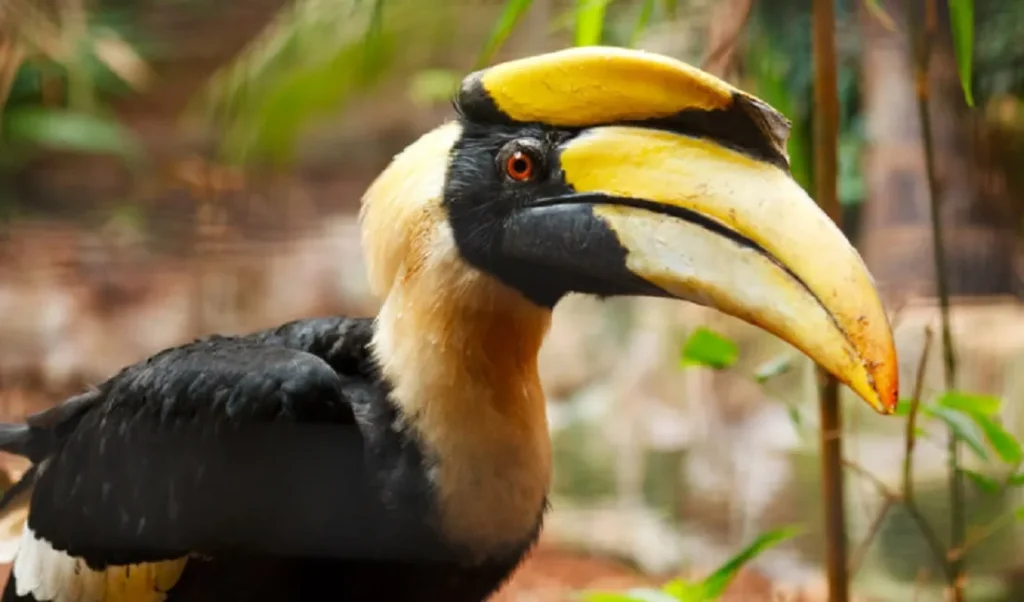
6- East K. Anglong Wildlife Sanctuary
East Karbi Anglong Wildlife Sanctuary is a prominent wildlife sanctuary in the Karbi Anglong district of Assam, India. It is known for its diverse flora and fauna, picturesque landscapes, and rich cultural heritage. Here is some information about East Karbi Anglong Wildlife Sanctuary:
Location: East Karbi Anglong Wildlife Sanctuary is in the Karbi Anglong district of Assam, covering an extensive area of approximately 221 square kilometers. Dense forests, rolling hills, and pristine rivers characterize the Eastern Karbi Hills region.
Flora: The sanctuary is adorned with a wide variety of plant species. It is home to tropical evergreen forests, deciduous forests, bamboo groves, and grasslands. The sanctuary’s vegetation provides a favorable habitat for diverse wildlife species.
Fauna: East Karbi Anglong Wildlife Sanctuary is renowned for its diverse wildlife population. It is home to several rare and endangered species, including the Asian elephant, tiger, leopard, clouded leopard, gaur, sambar deer, barking deer, wild boar, hoolock gibbon, and various species of primates. The sanctuary also boasts a rich birdlife with numerous resident and migratory species.
Avian Diversity: The sanctuary is a haven for birdwatchers, with over 220 species of birds recorded in the area. Some of the notable bird species found in East Karbi Anglong Wildlife Sanctuary include the great Indian hornbill, Oriental pied hornbill, wreathed hornbill, white-winged wood duck, and various species of eagles, owls, and water birds.
Scenic Beauty: The sanctuary offers breathtaking landscapes, with its rolling hills, meandering rivers, and lush green forests. Visitors can enjoy trekking through the sanctuary’s trails, capturing stunning views, and immersing themselves in the natural beauty of the surroundings.
Visiting East Karbi Anglong Wildlife Sanctuary: The sanctuary provides opportunities for wildlife safaris, birdwatching, nature walks, and photography. Before planning a visit, it is advisable to check with the forest department or local authorities for permits, entry fees, and any specific guidelines.
Accommodation Options: While the sanctuary may have limited accommodation facilities, options are available in nearby towns and cities. Diphu, the largest town in Karbi Anglong district, offers a range of hotels, guesthouses, and resorts to cater to visitors’ needs.
7- Nambor Wildlife Sanctuary
Nambor Wildlife Sanctuary is a beautiful wildlife sanctuary in the Karbi Anglong district of Assam, India. Known for its rich biodiversity and scenic landscapes, the sanctuary offers a unique experience for nature lovers and wildlife enthusiasts. Here is some information about Nambor Wildlife Sanctuary:
Location: Nambor Wildlife Sanctuary is situated in the Karbi Anglong district of Assam, covering an area of approximately 37 square kilometers. It is nestled in the Eastern Karbi Hills region, characterized by dense forests, hilly terrain, and the presence of the Nambor River.
Flora: The sanctuary is home to a diverse range of flora, including tropical evergreen forests, semi-evergreen forests, and bamboo groves. The dense vegetation provides shelter and food for various wildlife species. The sanctuary is also known for its bamboo reserves, contributing to the local economy and ecosystem.
Fauna: Nambor Wildlife Sanctuary is rich in wildlife diversity. Several mammal species inhabit the sanctuary, including elephants, tigers, leopards, clouded leopards, wild boars, barking deer, sambar deer, capped langurs, and various species of primates. The sanctuary is also home to various avian species, making it a paradise for birdwatchers.
Avian Diversity: The sanctuary boasts an impressive bird population with over 150 species recorded in the area. Birdwatchers can spot species such as the great Indian hornbill, wreathed hornbill, pied hornbill, barbet species, bulbuls, flycatchers, and woodpeckers. The sanctuary’s varied habitats offer residents and migratory birds favorable conditions.
Scenic Beauty: Nambor Wildlife Sanctuary offers picturesque landscapes with dense forests, rolling hills, and the meandering Nambor River. The sanctuary’s natural beauty provides ample opportunities for nature walks, photography, and exploring the pristine surroundings.
Best Time to Visit: The ideal time to visit Nambor Wildlife Sanctuary is during the winter and spring seasons, from November to April. The weather during this time is pleasant and favorable for wildlife sightings. However, it is essential to note that the sanctuary is open throughout the year, and each season has its unique charm.
Accommodation Options: While the sanctuary may have limited accommodation facilities, nearby towns like Diphu and Haflong offer a range of hotels, guesthouses, and resorts to cater to visitors’ needs. It is recommended to make prior arrangements and book accommodations in advance.
8- Nambor - Doigrung Wildlife Sanctuary
Nambor-Doigrung Wildlife Sanctuary is a prominent wildlife sanctuary in the Karbi Anglong district of Assam, India. It is a significant protected area known for its diverse flora and fauna, scenic landscapes, and conservation efforts. Here is some information about Nambor-Doigrung Wildlife Sanctuary:
Location: Nambor-Doigrung Wildlife Sanctuary is situated in the Karbi Anglong district of Assam. It covers an area of approximately 97 square kilometers and is nestled in the Eastern Karbi Hills region.
Flora: The sanctuary is characterized by lush forests and various vegetation types. It encompasses tropical evergreen forests, semi-evergreen forests, and grasslands. The sanctuary is rich in tree species, including sal, holong, amari, and various bamboo species.
Fauna: Nambor-Doigrung Wildlife Sanctuary is home to diverse wildlife species. Mammals such as elephants, tigers, leopards, clouded leopards, sambar deer, barking deer, wild boars, and capped langurs can be found within the sanctuary. It is also known for its avian diversity, with numerous bird species inhabiting it.
Avian Diversity: Birdwatchers visiting Nambor-Doigrung Wildlife Sanctuary can spot various bird species. Common sightings include hornbills, barbets, woodpeckers, flycatchers, bulbuls, and other resident and migratory birds.
Scenic Beauty: The sanctuary offers picturesque landscapes, with rolling hills, dense forests, and serene streams. It provides a tranquil setting for nature enthusiasts and photographers to capture the beauty of the natural surroundings.
Best Time to Visit: The ideal time to visit Nambor-Doigrung Wildlife Sanctuary is during the winter and spring seasons, from November to April. The weather during this time is pleasant, and wildlife sightings are more frequent. However, the sanctuary remains open throughout the year, and each season has its unique charm.
Accommodation Options: While the sanctuary may not have extensive accommodation facilities, nearby towns like Diphu and Haflong offer a range of hotels, guesthouses, and resorts to cater to visitors’ needs. It is advisable to make prior arrangements and book accommodations in advance.
9- Amchang Wildlife Sanctuary
Amchang Wildlife Sanctuary is a prominent wildlife sanctuary in the Kamrup district of Assam, India. It is known for its diverse flora and fauna, lush green landscapes, and conservation efforts. Here is some information about Amchang Wildlife Sanctuary:
Location: Amchang Wildlife Sanctuary is situated in the Kamrup district of Assam. It covers an area of approximately 78.64 square kilometers and is located close to Guwahati, the capital city of Assam.
Flora: The sanctuary is characterized by dense forests and various vegetation. It encompasses tropical moist deciduous forests, evergreen forests, and bamboo groves. The sanctuary is home to various tree species, including sal, sisu, teak, gamari, and several bamboo species.
Fauna: Amchang Wildlife Sanctuary is known for its diverse wildlife population. It provides habitat to numerous mammal species, including elephants, tigers, leopards, clouded leopards, wild boars, barking deer, sambar deer, langurs, and macaques. The sanctuary is also home to various reptiles, amphibians, and bird species.
Avian Diversity: Birdwatchers visiting Amchang Wildlife Sanctuary can witness a rich avian diversity. The sanctuary is home to numerous resident and migratory bird species, including hornbills, eagles, kingfishers, woodpeckers, owls, and various species of water birds.
Scenic Beauty: The sanctuary offers scenic landscapes with dense forests, rolling hills, and meandering streams. It provides a tranquil environment for nature lovers and photographers to explore and appreciate the beauty of the natural surroundings.
Best Time to Visit: The best time to visit Amchang Wildlife Sanctuary is during the winter and spring seasons, from November to April. The weather during this time is pleasant, and wildlife sightings are more frequent. However, the sanctuary remains open throughout the year, offering unique experiences each season.
Accommodation Options: While the sanctuary itself may have limited accommodation facilities, Guwahati, which is located nearby, offers a wide range of hotels, guesthouses, and resorts to cater to visitors’ needs.
10- Borail Wildlife Sanctuary
Borail Wildlife Sanctuary is a well-known wildlife sanctuary in the Cachar district of Assam, India. It is recognized for its rich biodiversity, scenic landscapes, and conservation efforts. Here is some information about Borail Wildlife Sanctuary:
Location: Borail Wildlife Sanctuary is situated in the southern part of Assam, specifically in the Cachar district. It covers an area of approximately 326 square kilometers and is nestled in the Borail Range of the Barak Valley region.
Flora: The sanctuary is characterized by diverse vegetation types. It encompasses tropical evergreen forests, semi-evergreen forests, moist deciduous forests, and bamboo groves. The sanctuary is home to various tree species, including sal, teak, oak, gamari, and bamboo.
Fauna: Borail Wildlife Sanctuary is known for its diverse wildlife population. It provides habitat to several mammal species, including elephants, tigers, leopards, clouded leopards, barking deer, sambar deer, wild boars, and langurs. The sanctuary is also home to various reptiles, amphibians, and bird species.
Avian Diversity: Birdwatchers visiting Borail Wildlife Sanctuary can witness various bird species. The sanctuary is home to numerous resident and migratory birds, including hornbills, eagles, pheasants, owls, woodpeckers, and various species of water birds.
Scenic Beauty: The sanctuary offers picturesque landscapes with rolling hills, dense forests, and streams. It provides opportunities for nature walks, photography, and experiencing the tranquility of the natural surroundings.
Best Time to Visit: The ideal time to visit Borail Wildlife Sanctuary is during the winter and spring seasons, from November to April. The weather during this time is pleasant, and wildlife sightings are more frequent. However, the sanctuary remains open throughout the year, and each season has its unique charm.
Accommodation Options: While the sanctuary may not have extensive accommodation facilities, nearby towns like Silchar and Haflong offer a range of hotels, guesthouses, and resorts to cater to visitors’ needs.
11- Burachapori Wildlife Sanctuary
Burachapori Wildlife Sanctuary is a famous wildlife sanctuary in the Sonitpur district of Assam, India. It is recognized for its diverse flora and fauna, beautiful landscapes, and conservation efforts. Here is some information about Burachapori Wildlife Sanctuary:
Location: Burachapori Wildlife Sanctuary is situated in the Sonitpur district of Assam. It spans an area of approximately 44 square kilometers and is located along the northern bank of the Brahmaputra River.
Flora: The sanctuary is characterized by a variety of vegetation types. It encompasses tropical moist deciduous forests, riverine forests, and grasslands. The sanctuary is home to various tree species, including sal, teak, amari, gamari, and other indigenous flora.
Fauna: Burachapori Wildlife Sanctuary is known for its diverse wildlife population. It provides habitat to several mammal species, including elephants, tigers, leopards, clouded leopards, barking deer, sambar deer, wild boars, and langurs. The sanctuary is also home to various reptiles, amphibians, and bird species.
Avian Diversity: Birdwatchers visiting Burachapori Wildlife Sanctuary can witness a rich avian diversity. The sanctuary has numerous resident and migratory birds, including hornbills, eagles, falcons, storks, herons, and various waterfowl.
Scenic Beauty: The sanctuary offers scenic landscapes with dense forests, meandering rivers, and grassy patches. It provides opportunities for nature walks, birdwatching, and experiencing the tranquility of the natural surroundings.
Best Time to Visit: The ideal time to visit Burachapori Wildlife Sanctuary is during the winter and spring seasons, from November to April. The weather during this time is pleasant, and wildlife sightings are more frequent. However, the sanctuary remains open throughout the year, and each season has its unique charm.
Accommodation Options: While the sanctuary may not have extensive accommodation facilities, nearby towns like Tezpur and Nagaon offer a range of hotels, guesthouses, and resorts to cater to visitors’ needs.
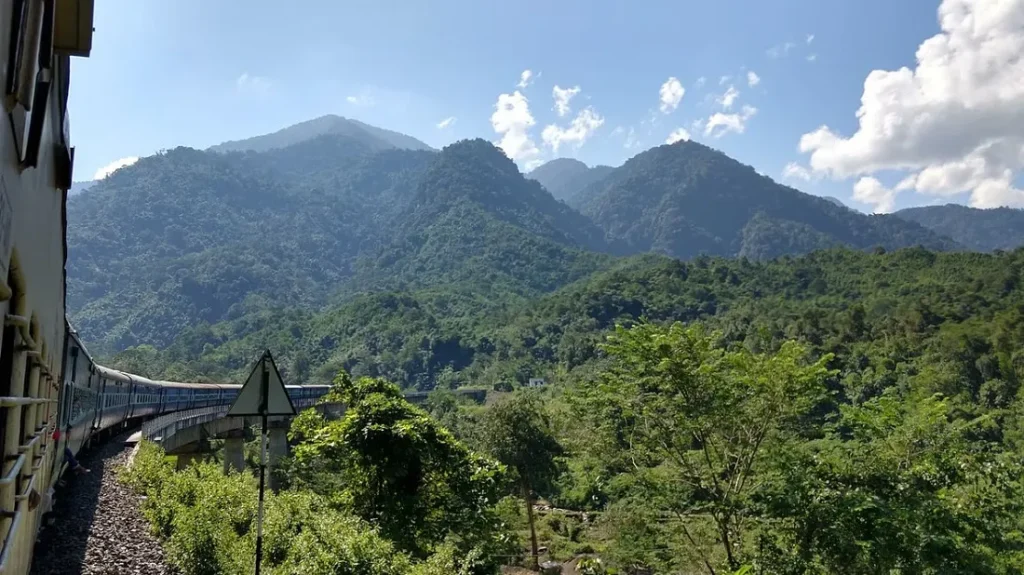
12- Hollongapar Wildlife Sanctuary
Hollongapar Wildlife Sanctuary, also known as Gibbon Wildlife Sanctuary, is a significant wildlife sanctuary in the Jorhat district of Assam, India. It is renowned for its conservation efforts, particularly in protecting the Hoolock gibbons, the only apes in India. Here is some information about Hollongapar Wildlife Sanctuary:
Location: Hollongapar Wildlife Sanctuary is in the Jorhat district of Assam, about 20 kilometers southwest of Jorhat city. It covers an area of approximately 20.98 square kilometers.
Flora: The sanctuary is characterized by evergreen and semi-evergreen forests. It consists of tall trees, thick undergrowth, and bamboo groves. The dominant tree species include Hollong (Dipterocarpus macrocarpus), Nahar (Mesua ferrea), Sop (Saurauia nepalensis), and other associated plant species.
Fauna: The sanctuary’s primary focus is the conservation of Hoolock gibbons. It is home to the Western Hoolock gibbon (Hoolock hoolock), which is listed as an endangered species. Apart from gibbons, the sanctuary also provides habitat to other mammal species, such as elephants, tigers, leopards, deer, and wild boars.
Avian Diversity: Hollongapar Wildlife Sanctuary is also rich in birdlife. It is home to several species of birds, including the Great Indian Hornbill, Pied Hornbill, Wreathed Hornbill, Hill Myna, and various other resident and migratory bird species.
Scenic Beauty: The sanctuary offers a picturesque landscape with dense forests, rolling hills, and small streams. The lush green surroundings provide a tranquil environment and an excellent opportunity for nature lovers and photographers.
Best Time to Visit: The best time to visit Hollongapar Wildlife Sanctuary is during the winter and spring seasons, from November to April. The weather is pleasant, and the chances of wildlife sightings, including the Hoolock gibbons, are higher during this period. However, the sanctuary remains open throughout the year, and each season has charm.
Accommodation Options: While the sanctuary may have limited accommodation facilities, Jorhat city offers a range of hotels, guesthouses, and resorts to cater to visitors’ needs.
13- Pabitora Wildlife Sanctuary
Pobitora Wildlife Sanctuary, also known as Pobitora Wildlife Sanctuary, is a renowned wildlife sanctuary located in the Morigaon district of Assam, India. It is recognized for its significant population of Indian one-horned rhinoceroses and diverse flora and fauna. Here is some information about Pobitora Wildlife Sanctuary:
Location: Pobitora Wildlife Sanctuary is in the Morigaon district of Assam, approximately 50 kilometers east of Guwahati city. It spans an area of about 38.8 square kilometers.
Flora: The sanctuary is characterized by moist mixed deciduous forests and wetlands. It consists of tall grasses, scattered trees, and marshy areas. The dominant vegetation includes elephant grass, hog plum, water hyacinth, and other associated plant species.
Fauna: Pobitora Wildlife Sanctuary is famous for its population of Indian one-horned rhinoceroses. It is home to one of the highest densities of rhinoceroses in the world. Apart from rhinoceroses, the sanctuary also provides habitat to other wildlife species, such as wild boars, leopards, elephants, deer, and bird species.
Avian Diversity: Pobitora Wildlife Sanctuary is a paradise for birdwatchers. It is home to a wide variety of resident and migratory bird species, including the greater adjutant stork, lesser adjutant stork, spot-billed pelican, white-bellied heron, and several species of eagles, owls, and water birds.
Scenic Beauty: The sanctuary offers a picturesque landscape with grasslands, marshes, and small water bodies. The natural beauty of Pobitora is captivating, allowing visitors to enjoy nature’s serenity.
Best Time to Visit: The best time to visit Pobitora Wildlife Sanctuary is during the winter months, from November to March. The weather is pleasant, and wildlife sightings, including the rhinoceroses, are more frequent during this period. However, the sanctuary remains open throughout the year, and each season has charm.
Accommodation Options: Pobitora Wildlife Sanctuary offers limited accommodation options, including forest rest houses and eco-cottages. Alternatively, Guwahati city, located nearby, offers a wide range of hotels and guesthouses for visitors.
14- Sonai Rupai Wildlife Sanctuary
Sonai Rupai Wildlife Sanctuary is a prominent wildlife sanctuary in the Sonitpur and Nagaon districts of Assam, India. It is known for its diverse ecosystem, rich wildlife, and scenic landscapes. Here is some information about Sonai Rupai Wildlife Sanctuary:
Location: Sonai Rupai Wildlife Sanctuary is situated in the Sonitpur and Nagaon districts of Assam. It covers an area of approximately 220 square kilometers and is nestled between the Kameng River and the Sonai River.
Flora: The sanctuary comprises grasslands, semi-evergreen forests, and riverine forests. It showcases a variety of vegetation, including tall grasses, bamboo groves, sal trees, teak trees, and various other plant species.
Fauna: Sonai Rupai Wildlife Sanctuary is home to diverse wildlife. It provides habitat to several mammal species, including the Bengal tiger, Indian elephant, Indian rhinoceros, Asiatic water buffalo, hog deer, leopard, and capped langur. The sanctuary is also known for its reptiles, such as the Indian python, king cobra, and various species of turtles.
Avian Diversity: Birdwatchers visiting Sonai Rupai Wildlife Sanctuary can enjoy rich avian diversity. The sanctuary is a haven for several residents and migratory bird species, including the white-winged wood duck, great hornbill, black stork, crested serpent eagle, and various species of water birds.
Scenic Beauty: The sanctuary offers breathtaking landscapes with rolling hills, lush green forests, and riverside views. It provides opportunities for nature walks, birdwatching, and capturing the beauty of the surroundings.
Best Time to Visit: The ideal time to visit Sonai Rupai Wildlife Sanctuary is during the winter and spring seasons, from November to April. The weather is pleasant, and wildlife sightings are more frequent during this period. However, the sanctuary remains open throughout the year, and each season has its unique charm.
Accommodation Options: While the sanctuary may not have extensive accommodation facilities, nearby towns like Tezpur and Nagaon offer a range of hotels, guesthouses, and resorts to cater to visitors’ needs.

